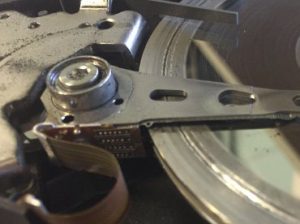In data storage technology, a partition is a container with a file system. The file system allows the data storage device to manage files.
Every popular data storage device uses partitions. Without partitions, a device might still contain the magnetic (or electronic) information that makes up the file, but without organization, the computer can’t determine where files start and end.
A hard drive may lose a partition for several reasons:
- The file system (a set of instructions for managing data) may become corrupt or unreadable due to a physical issue with the storage device.
- The user might accidentally delete a partition.
- The user might reformat the device, losing the partition information.
- The user might repartition the disk and make a mistake (such as resizing a partition in a way that damages the partition table).
- Certain viruses or malware may target partition data, though this is rare.
When a hard drive loses a partition, the data is generally recoverable. It still exists as magnetic charges, and if the partition can be reinstated, the files will be restored.
Free software can restore partitions that have been lost due to user error — but if the partition damage occurs due to a physical hard drive failure or malware infection, it’s a bad idea to run software. Here’s why.
Recovering a Lost Hard Drive Partition: What to Know
Hard drive failures can occur because the actuator heads (also called read/write heads) fail to find the correct part of the platters (the magnetic disks that store your data). Learn more about hard drive head crashes.

A hard drive’s platters with severe damage.
When this is the case, any software operation can make data loss worse. Attempting to recover a lost partition could overwrite data, including portions of the original partition table that are necessary for a complete recovery.
And if a hard drive is infected with malware that targets the partition data or file system, simply repartitioning the drive won’t treat the underlying issue. These types of viruses are rare, but they exist: In 2015, the Rombertik spyware made headlines by implementing a novel “self-destruct” mechanism that targeted the hard drive master boot record (MBR).
For those reasons, we strongly recommend working with a qualified data recovery partner to resolve partition issues. Even if you’re 100% confident that you’ve lost your data due to user error, partition recovery can be tricky — by attempting recovery on your own, you’re taking a significant risk.
If the attempt fails, you might lose data permanently (and at the very least, you’ll face a bigger bill when you contact a professional data recovery provider).
In most cases, partition recovery carries a high success rate.
To reiterate our main point: If you absolutely need data, invest in professional data recovery. We make the process easy by providing risk-free media evaluations, and we support all of our services with our no data, no charge guarantee.
With that said, free utilities are available for recovering lost partitions. Again, don’t use these utilities unless you’re sure that the partition damage occurred due to user error. You’ll typically get one chance to recover your data — if the files are truly important, you shouldn’t take unnecessary risks.
One software option for partition recovery is TestDisk, a free, open-source tool designed for FAT, exFAT, NTFS, and ext2 file systems. Learn more about TestDisk here.
Note that Datarecovery.com does not endorse TestDisk or any other data recovery software. We’re providing this link because it’s popular, open-source software (and if we didn’t link to it, you could easily find it with a quick Google search).
If you decide to use partition recovery software, keep these tips in mind:
- Create a clone of your device before attempting partition recovery. This limits the chances of permanent data loss from a failed attempt. Learn how to clone hard disks with ddrescue.
- Do not install partition recovery directly to the storage device with the target files. In certain circumstances, the software installation could overwrite data.
- Do not attempt to use data recovery software if your drive shows any symptoms of physical damage, including (but not limited to) unusual noises, boot failure, or large numbers of bad sectors.
If you’ve lost data due to hard drive partition loss, we’re here to help. Call 1-800-237-4200 to speak with an expert or schedule a risk-free evaluation online.





